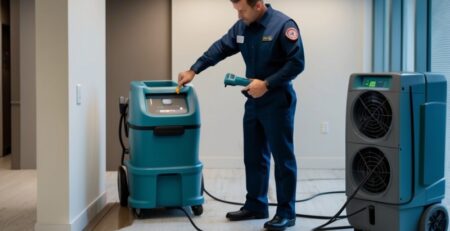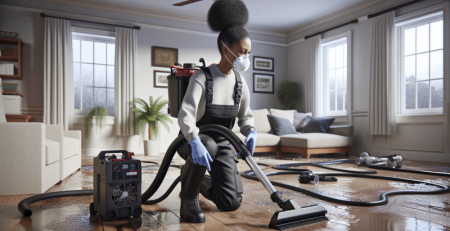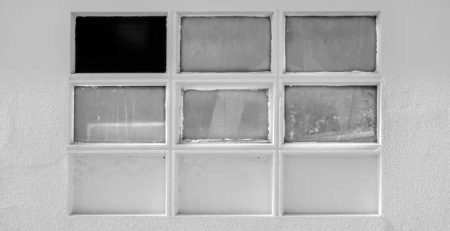How to Protect Your Home from Termite Damage
Termites are often called “silent destroyers” because they can chew through wood, flooring, and even wallpaper without you noticing until it’s too late. If you’re a homeowner, understanding how to protect your home from these pesky pests is crucial. In this guide, we’ll walk you through effective strategies to safeguard your property from termite damage, ensuring your home remains a safe haven for you and your family.
Understanding Termite Behavior
Before we dive into protection strategies, it’s essential to understand what termites are and how they operate. Termites are social insects that live in colonies, and they primarily feed on cellulose found in wood and plant materials. There are several types of termites, but the most common ones that threaten homes are subterranean, drywood, and dampwood termites.
Subterranean termites live underground and build mud tubes to access food sources. They are the most destructive type, often causing significant damage before homeowners even realize they’re there. Drywood termites, on the other hand, infest the wood they consume, making them a bit easier to detect since they leave behind droppings. Dampwood termites thrive in moist environments, so if your home has water damage, you might be at risk.
Understanding these behaviors can help you identify potential risks in your home. For instance, if you notice mud tubes around your foundation or wood that sounds hollow when tapped, it’s time to take action. Regular inspections and being aware of the signs can save you from costly repairs down the line.
Regular Inspections: Your First Line of Defense
One of the best ways to protect your home from termite damage is through regular inspections. You don’t need to be an expert to spot potential issues; just a keen eye and a little knowledge can go a long way. Aim to inspect your home at least once a year, or more frequently if you live in an area prone to termite infestations.
Start by checking areas where wood meets the ground, such as your foundation, deck, and any wooden structures outside. Look for signs of mud tubes, which are about the width of a pencil and can be found along walls or foundations. Also, inspect for any wood that appears to be damaged or has a hollow sound when tapped.
If you’re unsure about your inspection skills, consider hiring a professional. Companies like Kraus Restoration offer expert services in property damage restoration in New Jersey, including termite inspections. Their IICRC certified experts can provide a thorough assessment and recommend any necessary treatments.
Moisture Control: A Key Factor
Termites thrive in moist environments, so controlling moisture in and around your home is crucial. Start by fixing any leaks in your plumbing or roof. Even small leaks can create a perfect breeding ground for termites. Additionally, ensure that your gutters are clean and functioning properly to direct water away from your home’s foundation.
Consider using a dehumidifier in damp areas like basements and crawl spaces. This can significantly reduce moisture levels, making your home less attractive to termites. If you have wood that’s in contact with the soil, such as fence posts or deck supports, consider using pressure-treated wood that is resistant to moisture and pests.
For homes that have experienced water damage, it’s essential to engage in water damage restoration services. Not only will this help prevent mold growth, but it will also deter termites from making your home their next meal. Remember, a dry home is a termite-free home!
Physical Barriers: Building a Fortress
When constructing or renovating your home, consider incorporating physical barriers that deter termites. These barriers can include steel mesh, concrete, or sand barriers that make it difficult for termites to access your home. For instance, if you’re building a new deck, ensure that the posts are set in concrete rather than directly in the soil.
Another effective method is to use borate-treated wood, which is less appealing to termites. This treatment can be applied during the construction phase or to existing wood structures. It’s a proactive approach that can save you from future headaches.
Additionally, if you have a crawl space, ensure it’s well-ventilated and that there’s a vapor barrier in place. This not only helps with moisture control but also makes it less inviting for termites. If you’re unsure about how to implement these barriers, consulting with a professional restoration service can provide you with tailored solutions for your home.
Regular Maintenance: Keeping Your Home in Check
Regular maintenance is essential in protecting your home from termite damage. This includes keeping your yard tidy and ensuring that wood piles, mulch, and other cellulose materials are stored away from your home’s foundation. Termites are attracted to these materials, so the further away you keep them, the better.
Also, inspect your home’s exterior regularly. Look for cracks in the foundation, gaps around windows and doors, and any signs of wood damage. If you notice any issues, address them immediately. A small crack can become a significant entry point for termites if left unchecked.
Don’t forget about your landscaping! Trim back any trees or shrubs that are touching your home, as these can provide a bridge for termites to access your property. Regularly maintaining your yard not only enhances your home’s curb appeal but also acts as a barrier against pests.
Professional Pest Control: When to Call in the Experts
Sometimes, despite your best efforts, termites can still find their way into your home. If you suspect an infestation, it’s crucial to call in professional pest control services. These experts have the tools and knowledge to effectively eliminate termites and prevent future infestations.
Look for companies that offer comprehensive pest control services, including inspections, treatments, and ongoing monitoring. It’s also beneficial to choose a company that is IICRC certified, like Kraus Restoration, which ensures they adhere to industry standards and practices.
During the treatment process, the pest control team will assess the extent of the infestation and recommend the best course of action. This may include chemical treatments, bait systems, or even fumigation in severe cases. Remember, early detection and treatment are key to minimizing damage and costs.
Insurance and Termite Damage: What You Need to Know
Understanding your homeowner’s insurance policy is vital when it comes to termite damage. Many policies do not cover damage caused by pests, including termites. However, some may offer limited coverage for repairs if the damage is a result of a covered peril, like fire or water damage.
It’s essential to review your policy and speak with your insurance agent about what is and isn’t covered. If you live in an area prone to termite infestations, consider adding a pest control rider to your policy. This can provide peace of mind knowing that you’re protected against potential damages.
Additionally, if you do experience termite damage, document everything. Take photos, keep receipts for repairs, and maintain records of any pest control treatments. This documentation can be helpful if you need to file a claim or seek reimbursement for damages.
Conclusion
Protecting your home from termite damage requires a proactive approach. By understanding termite behavior, conducting regular inspections, controlling moisture, and maintaining your property, you can significantly reduce the risk of an infestation. Don’t hesitate to call in professionals when needed, and always stay informed about your insurance coverage. Remember, a little prevention goes a long way in keeping your home safe and sound.
FAQs
What are the signs of a termite infestation?
Common signs include mud tubes along walls, hollow-sounding wood, and discarded wings near windows or doors. Regular inspections can help catch these signs early.
How often should I have my home inspected for termites?
It’s recommended to have your home inspected at least once a year, especially if you live in an area known for termite activity.
Can I treat a termite infestation myself?
While there are DIY treatments available, it’s often best to hire professionals who can effectively eliminate the problem and prevent future infestations.
How can I prevent termites from entering my home?
Control moisture, maintain your yard, store wood away from your home, and consider physical barriers during construction to deter termites.
Is termite damage covered by homeowners insurance?
Most policies do not cover termite damage, but it’s essential to review your policy and discuss coverage options with your insurance agent.









